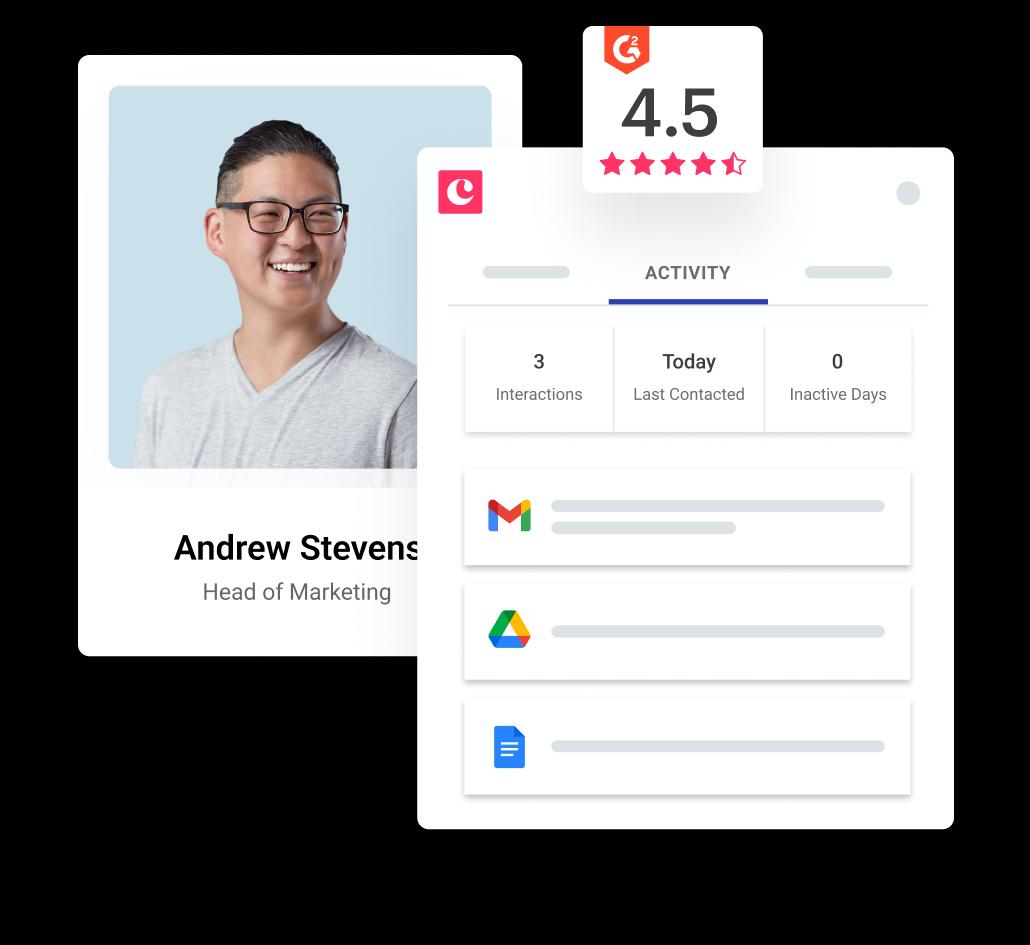
Amy Wood
Contributor
As a small business owner, you’re strapped for cash, resources, and time—so you have to be ruthless about the marketing initiatives you commit to.
Not only do they need to be high-impact, they also need to be affordable and provide a high return on investment.
Whereas big box retailers or Fortune 500 companies can afford to throw money at experimental (or just plain bad) marketing initiatives, small businesses just don’t have that luxury.
The following small business marketing initiatives might not seem all that glamorous, but they fit the bill of being affordable, requiring few human resources, and impactful.
We’ll look at how to:
- Build small business partnerships,
- Make it easy for locals to do business with you,
- Optimize your website, and
- Boost your credibility
First, let’s learn about one of the keys to small business marketing: building relationships.
Build small business partnerships
1. Co-branded campaigns
When you’re busting your butt to get your business seen by your target audience, one of the best things you can do to amplify your reach is to leverage other business’ similar audiences.
A low-cost, low-effort way to do this is to run a co-branded social contest. If you’re active on Instagram, you’ve probably seen these contests in action since they follow a pretty specific formula:
- Like the post.
- Follow all businesses involved in the contest.
- Tag your friends—one tag equals one entry.
- (Optional) Share the post in your Story/Feed.
This Mother's Day giveaway from a local hair salon had over 100 comments, when most other posts had only one or two.
Pro-tip
The key to a successful co-branded campaign is to partner with businesses that share similar audiences to yours—otherwise it’s unlikely the additional exposure you get will turn into actual sales.
Take the example above. A quick look at the salon’s Instagram suggests their ideal customer is a modern, image-conscious woman between the ages of 25 and 35. The cake shop they’re partnering with points to a similar audience, even though the two businesses themselves are quite different in their offers.
How to execute this tactic
To make this happen, all you need is an Instagram profile and one or two willing partners as well as some co-branded (usually just means having both companies’ logos/names) assets, such as images and copy.
In order to measure the success of the campaign, you’ll want to track likes and comments on the post as well as new followers, including how long they stick around for. Later provides a platform to track metrics, increase engagement, and more—and if you’re not in a position to sign up for a paid account, they publish incredibly valuable content on Instagram analytics, including how to manually calculate engagement rate.
If you find a huge boost in followers followed by a huge dip after the contest, you probably didn’t partner with the right businesses—and therefore audiences. Not to worry though, you can always try again with different businesses.
Take it further
So you’ve boosted your social engagement—now what? Don’t let those new followers and leads fall through the cracks. Instead, brush up on your social selling skills and turn them into paying customers.
2. Join small business communities
As a small business owner, I’m part of several Facebook communities that uplift other small business owners in various ways:
- Soliciting/receiving business operations advice
- Hiring members for services and goods
- Recommending members to potential customers outside the group
- Organizing co-branding initiatives (such as a wedding photographer partnering with a makeup artist, hair stylist, and florist for a professional shoot which all parties can use in their marketing)
- And much more!
Most of these Facebook groups are closed, and will require you to request to join. This is to weed out anyone who doesn’t quite fit the group’s criteria, such as location or niche.
There are many Facebook groups you can join, but not all of them will actually help improve your business. Don’t look for groups with the largest membership, but rather the ones with the most engagement.
The closed Facebook group above is limited to local women business owners and boasts an impressive 5,000+ members—who talk to each other regularly.
Pro-tip
If Facebook isn’t your thing, try joining an in-person small business group or meetup. They share the same purpose as the Facebook groups (to network, support, and uplift one another) but can be in some ways more impactful, since they foster face-to-face connections.
How to execute this tactic
Log into Facebook and search “[your city/region]” + “small business” or “[your niche] (such as freelancers)” + “group.” You should see at least a few results, but if not, expand your search with different keywords.
This small Canadian town boasts not one but two small business groups—both with regular engagement per the “X posts a day."
Once you find and join a few groups, read their membership rules and start engaging: introduce yourself, comment on posts, promote others, and share your expertise. The key is to be generous, which will be returned in kind.
Take it further
Ever hear of boost (a.k.a. engagement) groups? They’re small, curated groups of business owners who “boost” each others’ social profiles and posts.
Of course, if you join or create a boost group, you’ll want to ensure you’re partnering with businesses that share similar audiences and values as you. Doing so will ensure better results for you, but not at the expense of your integrity.
Make it easy for locals to do business with you
If your business has a physical address where customers or clients come to see you, it’s important that you make it super easy for them to evaluate your business and then find you IRL.
3. Perfect your Google My Business listing
Google My Business (GMB) is a cheap way to make a glowing first impression with your prospects. After all, recent stats suggest nearly 50% of all Google searches are seeking local information.
Using this free tool, you can easily manage how your business shows up in Google and various features such as Google’s Local Search results:
Clever description copy, a link to the menu, hours, and a simplified reservation give pasta lovers all the info they need to make an informed dining decision.
Pro-tip
An optimized GMB listing doesn’t replace your website, but rather supplements it by providing searchers with an easy way to learn more about your offerings. Because of this, it’s important that you give searchers a way to “convert” on your listing, with links to your site, contact info, and—if it makes sense—the ability to make a reservation or book an appointment.
How to execute this tactic
Whether you know it or not, if your business has been around for a while, you likely already have a GMB listing—you just need to claim it. If not, it’s simple enough to create one using the same link.
Once you’ve claimed and verified your GMB listing, it’s time to start optimizing. Search Engine Journal does a bang-up job of walking business owners through the process of optimizing Google My Business listings.
Take it further
Reviews (good ones, that is) are a powerful way to boost your credibility in your GMB listing and help you stand out from the pack. Keep reading for tips on running a review campaign. And don’t forget to brush up on how to best respond to Google reviews.
Optimize your website
Whether you have an existing website or are just starting out, you need to keep optimization at top of mind. This means making it easy for folks to learn more about your offers, contact you, and, ultimately, work with you.
4. Capture website visitors, wherever they are in the sales funnel
If you’re lucky enough to have a legitimate prospect visit your website, you better do everything you can to convert them—whether that means making a sale, soliciting a quote request, or securing a newsletter signup.
Sure, they may not be ready to buy yet, but even getting their email address will allow you to follow up with additional deals and offers down the line.
Lianna Patch from Punchline Copy does a fantastic job of this, providing several opportunities throughout her site for prospects to demonstrate interest—and thus several opportunities for her to follow up with them in a meaningful and appropriate way based on the action they take.
Upon landing on her site you’re given a chance to sign up for her newsletter, which contains tips for writing “funnier, more persuasive” copy. You’ll also see a chat plug-in, so you can ask Lianna your burning copywriting questions in real-time:
As you move down the page, a sticky bar along the top of the screen appears, asking visitors to opt-in to her newsletter once more. It’s subtle but sticks around while you scroll, so if a visitor wasn’t quite ready to sign up for the newsletter upon first landing on the site, but becomes convinced later on, they still have the option to opt-in:
Punchline’s CTAs are anything but boring, so don’t overlook the importance of copy when optimizing your site.
Pro-tip: Whatever your business is—whether freelance services or ecommerce—you need to make it easy for your prospects to get what they need.
Multiple on-site opt-ins helps to achieve this by providing something for everyone, depending on where they are in the buyer’s journey—and when you’re competing against big brands, every sale, lead, and signup represents another day in business.
Pro-tip
When optimizing your site, don’t just think about what you want to get out of it. Have your past clients found your consultation calls especially valuable? Can you offer free shipping on all orders over $50? If you can offer your prospects something of value right off the bat, you’ll not only improve your chances of a conversion, you’ll also win their trust.
How to execute this tactic
- Start of by mapping your site and identifying which pages have a CTA and which ones don’t. Common CTAs include newsletter signups, email opt-ins in exchange for a discount, click-to-call buttons, request for quote forms, contact forms, downloadable white papers or case studies, and many more. If you’re not sure which ones make sense for your business, take a look at your competitors to see what their compelling offers are and take note.
- For pages that don’t have CTAs, add one.
- For those that do have CTAs, dig into how they’re performing and consider allocating some resources to conversion rate optimization (CRO). This small business CRO guide from Authority Factory is a great jumping off point.
Take it further
If you’re capturing quality leads only to let them stagnate in a spreadsheet, you’re wasting your time.
As a small business owner, you need all the help you can get, and even if you aren’t quite at the point budget-wise to hire an employee, you may be well-served by investing in a CRM (customer relationship management) tool.
Here are a few things to look for in a small business CRM:
1. Integrations with your existing marketing stack—even if your existing stack is just your email provider.
If you're like most small businesses, you're probably using G Suite to power your business. One CRM that integrates well with Gmail is Copper—it lives in your Gmail, so you can add leads, update deals, and create tasks right from your inbox:
2. Ability to automatically capture and update lead data so you always have the most up-to-date contact info.
Foe example, Copper automatically scrapes the internet and captures contact emails and other information like social media profile:so you can focus on sales and marketing:
3. Insight into where each lead is in the sales funnel, so no one slips through the cracks.
Most CRMs should let you build custom pipelines that reflect your specific sales process, so that you can see exactly where each contact is in the buyer’s journey. Here's how it looks in Copper:

Pro-tip
Pipeline tips 👇
Learn how to manage your sales pipeline effectively (and close deals more efficiently) with this free handbook.
Increase your credibility
Consumers these days have more options than ever before. They also have the means to research their options—and if they doubt your credibility at all, rest assured your competition will get the sale.
5. Get quality reviews
When it comes to marketing, clever copy can go far, but a happy customer’s heartfelt review can go even further.
Asking a customer to write a review for you might feel uncomfortable, but it doesn’t have to be. By making it part of your sales process, it takes the awkward edge off and becomes just another item on your to-do list.
Take this example from my mortgage broker:
We had literally just finalized the purchase of our first home, so (of course) we were excited. Not only that, we were really impressed with the level of service we received, so we were in the absolute best mindset to write a raving review (which we did).
Whenever you finalize a sale, make sure to follow up with a personal note expressing your thanks and congratulations (should the occasion call for it) as well as a review request.
Pro-tip
As a business professional you’ll likely have at the very least a Google My Business listing, Facebook page, Yelp profile (here’s how to respond to those reviews), and LinkedIn profile. Although our mortgage broker didn’t do it, it’s important to make it easy for your customer by including a link to the specific page you’d like the review to appear on (for example, on Yelp). Doing so allows you to put your best foot forward on the platform that provides you with the most ROI.
How to execute this tactic
A personal note will likely get a better response than a template you’ve copy-pasted, but that’s not always possible when you scale. Learn more about how to get more (and better) reviews on every major platform, including when to ask, how to ask, and how to bolster your chances of getting a response.
Take it further
Already have a backlog of satisfied customers sitting in your CRM? Great, consider sending out a bulk email (that's still personalized!) asking them to review your business. Again, if your CRM is hooked up to Gmail already, that makes things much easier because it can pull names and other pieces of information automatically from your CRM into your email:
The blue and green highlighted text indicates text that can be personalized using merge tags, so you can send a single email to multiple recipients.
You could even consider sweetening the deal with an incentive. But beware, you don’t want to buy their review; you only want to encourage them—and a savvy prospect will be able to tell the difference.
Small business marketing, big business results
Being a small business owner means making the most of what you have, finding creative solutions, and identifying opportunities to streamline operations and maximize your capacity. It’s no different with small business marketing.
Although the marketing we’re most commonly exposed to is flashy and high-budget, small businesses simply don’t have the resources to do such things. But that doesn’t mean they can’t make a meaningful impact.
The initiatives detailed above will help you amplify your efforts so you can grow your business and continue charging forward with your vision. Over time, you’ll be able to invest more in your marketing, but in the meantime, focus on the foundation—your future self will thank you.










